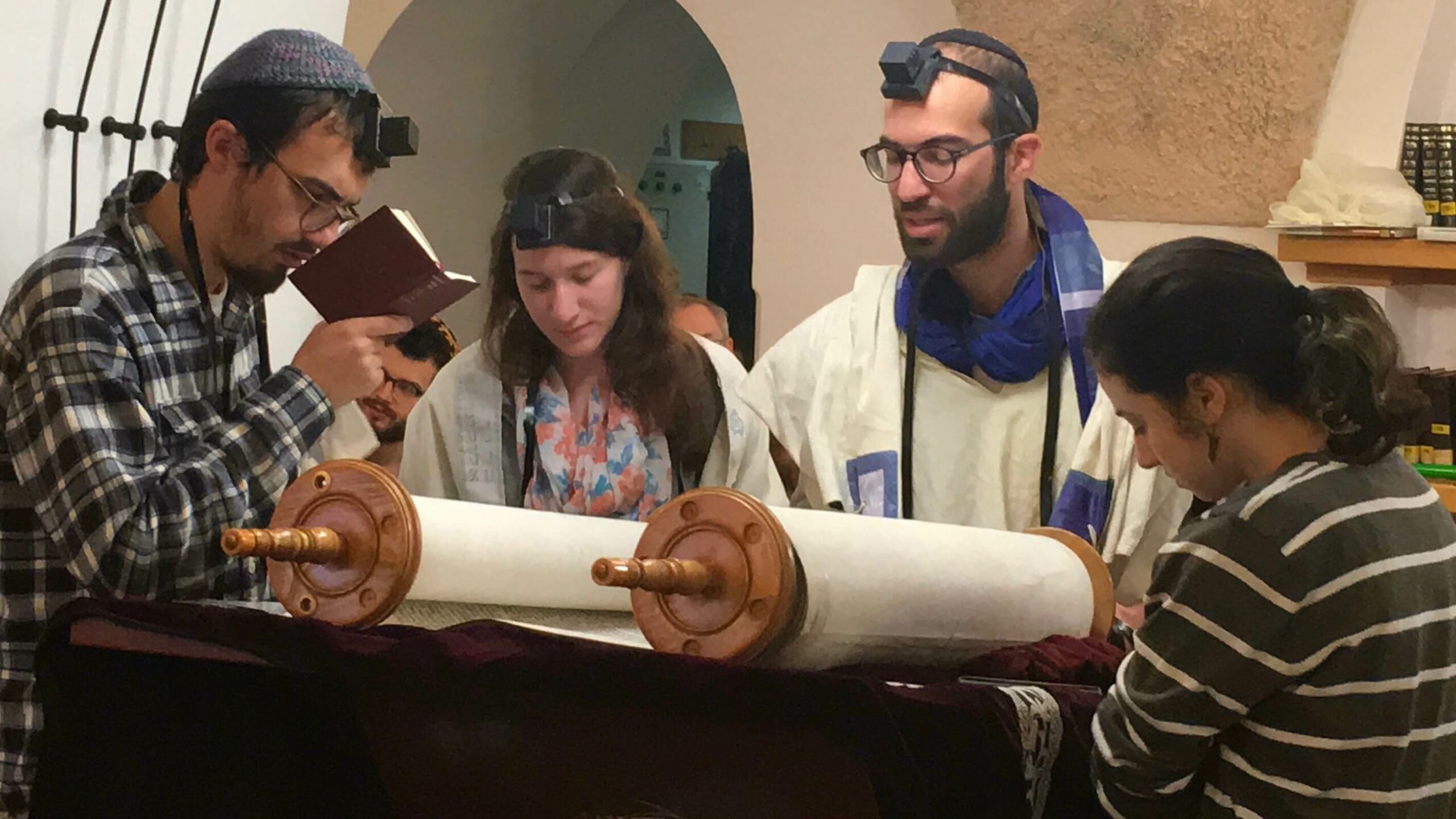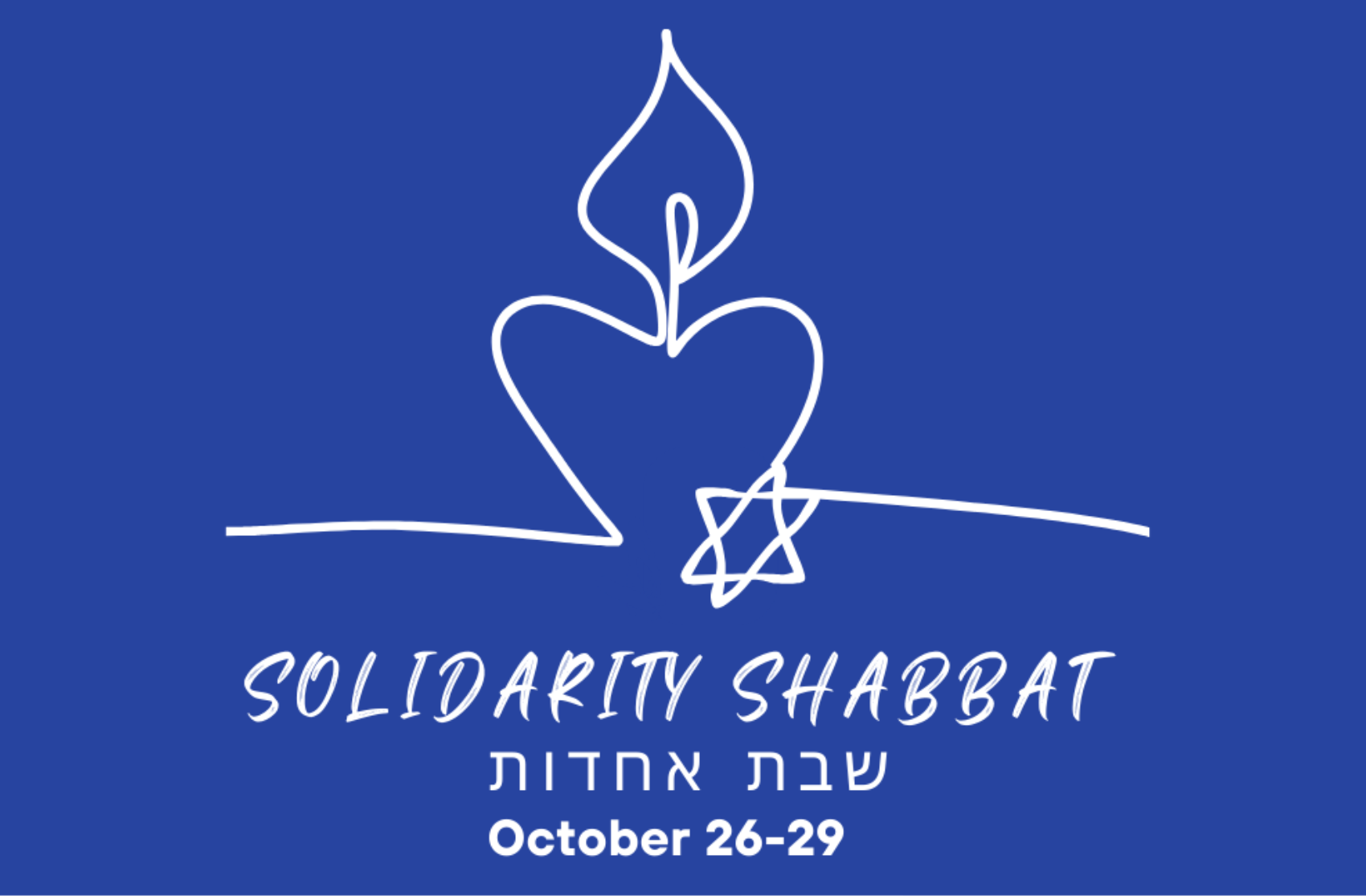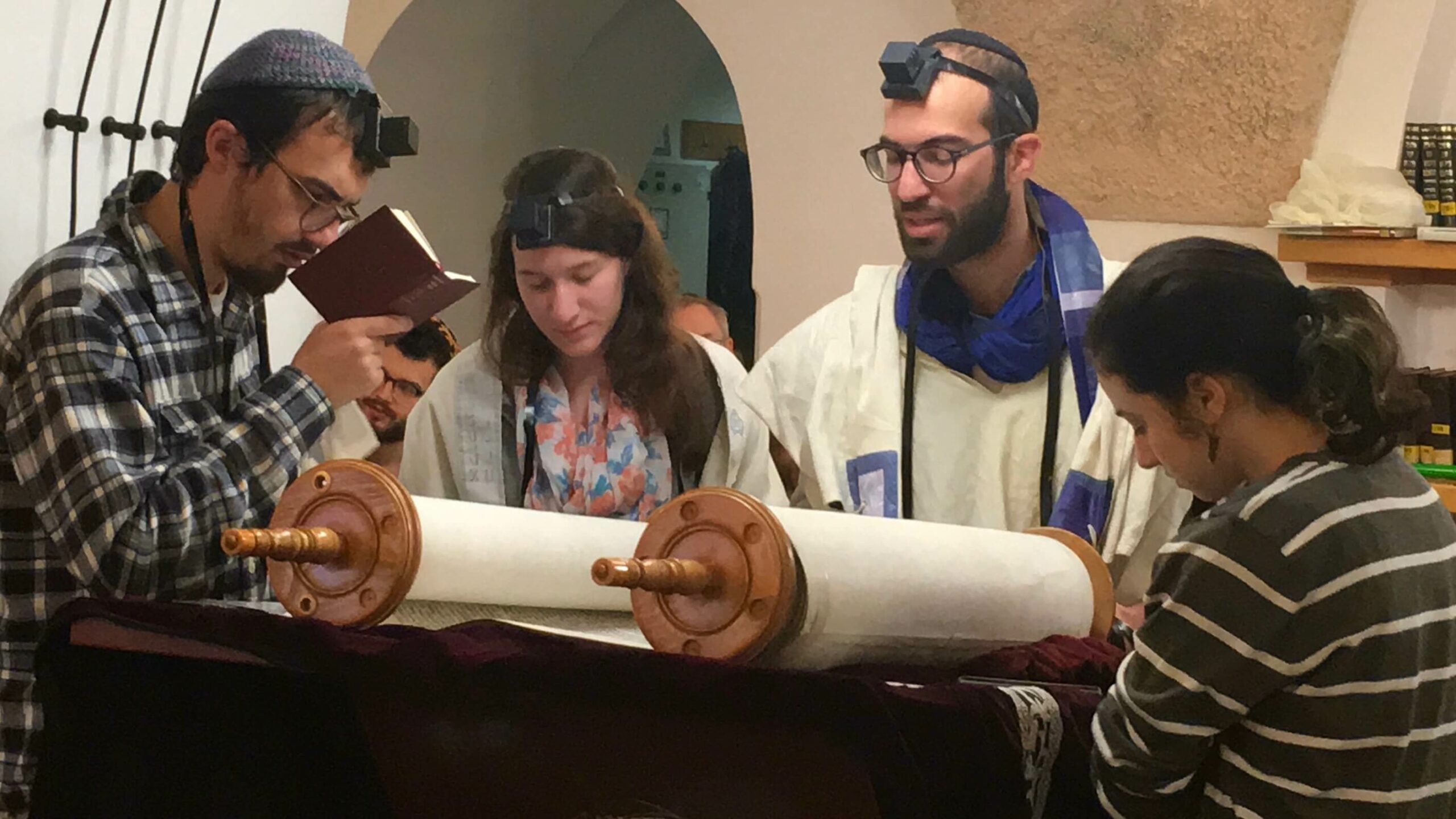

TORAH SPARKS (print friendly version)
Shabbat Chol HaMoed Sukkot September 29, 2018 | 20 Tishrei 5779
Annual | Shemot 33:12-34:26; Numbers 29:26-31 Etz Hayim p. 538-544, 935; Hertz p. 362-367, 697)
Haftarah | Ezekiel 38:18 – 39:16 (Etz Hayim p. 1259-1262; Hertz p. 979-982)
D’var Torah: Return of the Clouds
Rabbi Andy Shapiro Katz, Conservative Yeshiva Director of N.A. Engagement
The special Torah portion this week gives us a perfect opportunity to pick up where we left off last week. It deals with the giving of the Second Tablets and God forgiving Israel for the sin of the Golden Calf. Rashi (1040-1105) explains in his commentary on Shemot 32:1 and 33:11, that this event occurred on the 10th of Tishrei, thereby fixing that day forevermore as Yom Kippur, the national Day of Atonement. But why would this be the Torah portion read on Shabbat Chol HaMoed Sukkot?
The obvious answer is that line 34:22 mentions Chag HaAsif, another name for Sukkot, but I think the real reason is that this Torah portion calls attention to the connection between Yom Kippur and Sukkot. Shemot 34:5 reminds us that “God came down in a cloud” when talking to Moshe. It is as a cloud that God provided protection for the entire camp during their travels. When Bnei Yisrael sinned with the Golden Calf, the Clouds of Glory departed. This Torah portion is about Moshe’s efforts to bring them back.
There is a well-known machloket (disagreement) in Tractate Sukkah 11b about the meaning of “sukkot” in the verse from VaYikra 23:42-43, “You shall dwell in sukkot for seven days…So that your generations will know that I made the Israelites dwell in sukkot…” Rabbi Eliezer says that “sukkot” means the Clouds of Glory, and Rabbi Akiva says it means “sukkot mamash” – actual sukkot – either the place called Sukkot or some kind of physical structure.
Later commentators raised additional questions on their machloket. If we hold like Rabbi Akiva that it means actual sukkot, why is that something so important that God would command us to know it? And whether we hold like Rabbi Akiva or Rabbi Eliezer, why would we do this in Tishrei, when both the dwelling in sukkot and the appearance of the Clouds of Glory happened in the spring, shortly after they left Egypt?
Many years later, the Vilna Gaon (1720-1797) gave a powerful answer: the reason we observe Sukkot on the 15th of Tishrei is that it was the day the Clouds of Glory returned! On the 10th (Yom Kippur), God forgave them and gave the Second Tablets. On the 11th, God told them how the build the Mishkan. On the 12th the people started to bring their donations of the materials, and this continued through the 14th when Moshe told them to stop because they had enough. And then on the 15th, the day that would become the holiday of Sukkot, they started to build the Mishkan and that is what made the Clouds of Glory return. So Sukkot commemorates both the Clouds of Glory, as per Rabbi Eliezer, and the Mishkan – an actual physical structure – as per Rabbi Akiva!
Read this way, the machloket between Rabbi Eliezer and Rabbi Akiva is really about whether the Sukkah is to supposed to remind us of what God did (the return of the Clouds of Glory) or what Bnei Yisrael did (building the Mishkan). Are we primarily commemorating/acting out what we experienced or what we did? That is a question worth asking about many holidays!
And now we can return (finally) to the idea from last week – that the progression from Rosh HsShanah to Yom Kippur to Sukkot to Shemini Atzeret reflects the water/cloud/rain cycle. During Rosh HaShanah/Tashlich we “gather” our sins so that we can cast them away from us into the depths of the sea. On Yom Kippur, we immerse ourselves in prayer, hoping the mikveh of God’s mercy will dissolve the stain of our sins. We then rise above our physicality and ascend to God as pure souls, imitating how polluted water is purified through evaporation as it ascends to the heavens as water vapor.
The days following Yom Kippur are about coalescence. Our coming together to build Sukkot echoes Bnei Yisrael’s building of the Mishkan, when they were unified and motivated by the opportunity to create a place where they and God could dwell together. And just as coalescing water vapor forms clouds, Bnei Yisrael’s coalescing around the Mishkan caused the Clouds of Glory to return.
For 7 days, we enjoy the clouds/cloud-like Sukkah as protective shade-cover during the last days of summer, as confirmation that God has forgiven our sins and dwells with us, and as a promise of life-sustaining rain. And then on Shemini Atzeret, once Sukkot is over, it is time for rain. So we add “mashiv haruach u’morid hageshem” – the one who causes the wind to blow and rain to fall – to the second bracha of the Amidah.
As we approach the end of this intense period of personal and national growth, may we all merit to experience the rain of God’s blessings!
Parashah Self-Study
Vered Hollander-Goldfarb, Conservative Yeshiva Faculty
Following are questions for the special Torah reading of Shabbat Chol HaMoed Sukkot (Shemot 33-34) and Parashat Vezot Habracha that is read on Simchat Torah. This parashah, the only one read on a Chag (and not on a regular Shabbat), brings the Torah and Moshe’s life to a close.
Shabbat Chol HaMoed Sukkot
1) In the special Torah reading for Shabbat of Sukkot the name ‘Sukkot’ is not mentioned. Rather, the holiday is called ‘the Chag of the ingathering’ (Shemot, 24:22). That verse opens with ‘you shall do the Chag of Shavuot [at the time of] the beginning of the harvest.’ What aspect of Sukkot is stressed in this section? Why do you think that the Torah placed a holiday at the gathering of the harvest?
2) In the verses just prior to the mitzvot of the Chagim (holidays) the Torah gives a stern warning against worshiping other gods (34:12-17). Why do you think that this warning was placed here, in this context?
Parashat Vezot Habracha (Simchat Torah)
3) In the last 4 parashot Moshe warned the people about all the horror that will befall them if they fail to keep to the instructions of God. Why are his (apparently) last words to the people a blessing?
4) By God’s instructions, Moshe goes up on Mount Nebo and dies there. At his death he is called “the servant of the LORD” (34:5). Why do you think that this title was bestowed on Moshe at this point? (It does not appear earlier in the Torah.) Challenge: One other identified person is called by this title at the end of his life, who is it?
5) Following Moshe’s death, the Children of Israel mourn him for 30 days (34:8). When Aaron died (Bamidbar 20:28-29), it is said that the whole House of Israel mourned him for 30 days. Rashi and Ibn Ezra agree that the mourning for Aaron was greater, but the reasons they give differ greatly. Why do you think that the signs of mourning might have been greater at the time of Aaron’s death?
Chazak Chazak VeNitchazek!
D’var Haftarah: Models of Redemption
Rabbi Mordechai Silverstein, Conservative Yeshiva Faculty
The rabbinic sages saw many parallels between Sukkot and Pesach and it affected their thinking on both a halachic and theological level. From a legal or halachic perspective, it is plain to see that both festivals fall in the middle of the month, the 15th. This led the sages to determine that just as on Pesach there is an obligation to say kiddush and eat matzah on the first night, so too there is an obligation to say kiddush and eat bread in the sukkah on the first night of Sukkot. The sages also saw both holidays as a time of redemption – geula. Regarding Pesach, this point is obvious – the whole festival is about the miraculous redemption of the people of Israel from Egypt. But Sukkot’s connection to redemption is less obvious.
This question may be answered by looking at the haftarot that the sages assigned to Sukkot. For the first day of Sukkot, the sages selected a reading from Zechariah describing the eschatological battle over Jerusalem in the end of days. Similarly, the haftarah for Shabbat Chol HaMoed recounts the battle against the forces of Gog, a future enemy who will be overcome before all of the nations of the world come to recognize God. At the very least, these futuristic reading are gory, grotesque and surrealistic for those of us who have never experienced the battle field, and it is hard to fathom what they have to do with Sukkot, the time of our joy – zman simchateinu.
The answer to this question may be alluded to in the following midrash regarding the redemption from Egypt: “the like of which has never been seen’ (Shemot 9:18) [regarding the plague of hail] – but unlike the plague of the first born, this does not mean that there will not be a plague like it in the future. When? In the days of Gog and Magog, as we note in a verse from Job: ‘which I have put aside for a time of adversity, for a day of war and battle.’ (38:23) This is what is meant in Ezekiel’s prophecy: ‘I will pour down torrential rain, hail and sulfurous fire.’ (Ezekiel 38:22)” (adapted from Shemot Rabbah 12:2 Shinan ed. p. 246) These sages saw a parallel between what happened in Egypt and that which Ezekiel describes happening in the future.
Some of the sages apparently saw Pesach as the redemption which began the saga of the Jewish people and Sukkot as the time of the ultimate redemption. The ultimate redemption, of necessity from their point view, had to overshadow the first one. We, of course, are squeamish about such things and would prefer a more peaceful resolution when the time comes, but then again, our imaginations are not colored by the reality of the Babylonia exile that the Ezekiel saw with his own eyes or the reality of domination which the sages experienced at the hands of the Romans. For us, the rabbinic tradition that the seventy bulls sacrificed on Sukkot for the welfare of the nations of the world will suffice.







